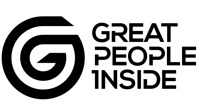How to measure values alignment to strengthen your organisation
It doesn’t matter whether you’re a small family business or a large multinational; values alignment is at the heart of an organisation’s culture. A strong set of values can help build a positive work environment and foster:
- trust,
- integrity, and
- accountability.
Values provide a sense of purpose and direction to clients, stakeholders and employees. Both are vital to you as a business, identifying business identity and as an individual. Values represent your inner voice reflecting your morals, scruples, and integrity. They are what you stand for. They are the personality of your business, which in turn affects your decisions. So, what you do and how you do it; your culture.
Importance of values alignment
Most business owners and leaders proudly feature the organisational values:
- on their websites,
- in job advertisements, and
- during company presentations to stakeholders.
While your company’s values define your culture, how can you be sure that everyone in your team is on the same page? Think back to when you experienced a situation where you were required to compromise your values. How did you feel about it?
For most people, it makes them uncomfortable, and they struggle to reconcile the differences.
But why should we be bothered if not all employees align with corporate values?
Aren’t values just a guide?
After all, it’s not like they are a government regulation!
Values and company culture are important because they significantly impact the success and longevity of a corporation.
Leaders should be concerned. Your culture, the heart of your business, can quickly become a liability if the core organisational values are not accepted, embraced, and practised by every team member in your company. A lack of alignment by team members with your values can interfere with the ability of your business to deliver its strategic goals. As a result, this position can negatively impact the overall productivity and success of the organisation.
Team members must align with organisation values to avoid misunderstandings, miscommunication, and a lack of trust among team members. Without solid values, alignment can lead to:
- reduced morale,
- decreased motivation, and
- lower levels of job satisfaction.
It can negatively impact the overall performance of the team and the organisation as a whole.
Current methods used to measure alignment at interview
Discussions about values often come up during the interview process. And most hiring managers have their own approach to checking alignment. This approach may include:
- articulating the organisation’s values and their link to operations,
- asking the candidate about their decision-making process, or
- inviting them to state their interpretation of the organisation’s values.
No matter what questions you ask, it’s not an objective measure. Especially given that research for SEEK shows that almost half the candidates say they haven’t been sincere in their interview.
You could flip a coin as you have a 50/50 chance of getting it right. If you fail to verify alignment, the issues arise months after the employee joins the team when it’s too late.
Therefore, it is critical to understand which values align with your vision of the company.
Values alignment and cultural measuring tools are essential for organisations to assess the potential candidates’ values and cultural fit. By using these tools, organisations can identify candidates who share the same values and beliefs as the company, leading to:
- increased job satisfaction,
- higher levels of employee engagement, and
- better overall performance.
Additionally, values alignment and cultural measuring tools can help to reduce turnover and increase the likelihood of a successful long-term employment relationship.
Objective information will inform your decision
Our flexible values alignment assessment solution scientifically measures more than 13 different values, so you can choose which ones to include for your organisation. We start by benchmarking values alignment in your business. Then you compare potential candidates to determine a “fit” for your company.
Typically feedback we receive from our clients says:
“The flexibility of the tool is impressive. It has helped us hire people who fit as we can develop custom benchmarks and assessments that measure our precise role requirements and ensure alignment with our values.”
“GR8PI has improved our hiring success and reduced employee turnover by 76%.”
When values align, employees are motivated, engaged, and committed to the company’s success.
To learn more about our values assessments, email with “values” as the subject, and we will be in touch shortly.

